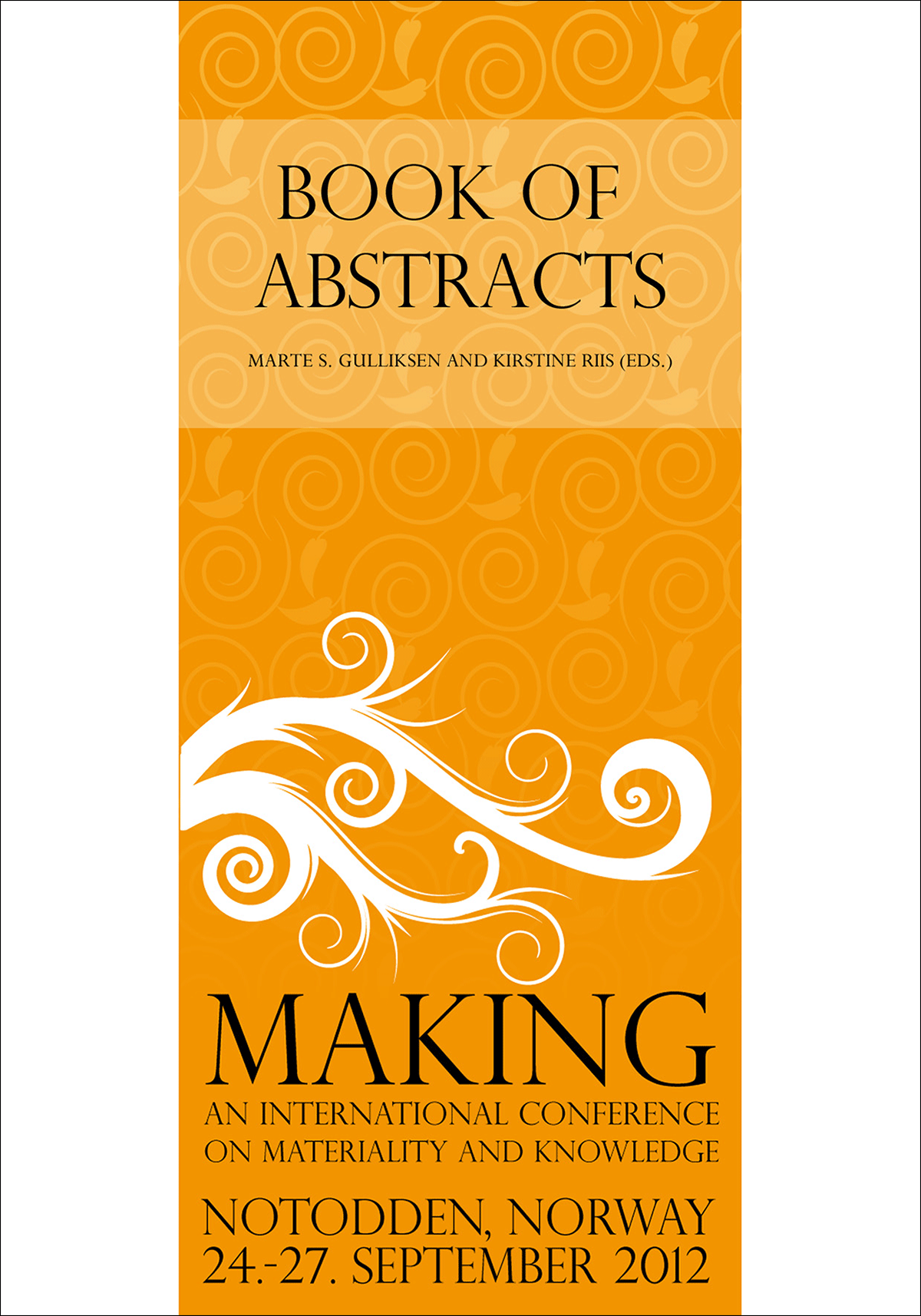Situating Creative Artifacts in Art and Design Research
Author: Nithikul Nimkulrat
peer-reviewed conference paper, 2012
The practice-led research approach has emerged in art and design academia for nearly three decades. The approach considers the researcher s creative practice (i.e. the making of material artefacts) as the main vehicle for research, the results of which include not only a written text but also artefacts to be evaluated in a research context.
This paper aims at discussing the positions of art and design artefacts and their making in a practice-led research process. Two creative productions and exhibitions featuring my textile artefacts inclusively carried out for tackling specific research problems are examined as case studies. The first case comprises the production of a series of artworks and an exhibition namely Seeing Paper created as part of my completed doctoral research project entitled Paperness: Expressive Material from an Artist s Viewpoint. The research examines the relationship between a physical material and artistic expression in textile art and design. The second case includes the production of a series of luminous objects called The White Light . These objects are expected to generate a discussion on boundaries between functional and aesthetic objects and those between art, craft and design disciplines, especially when they were displayed in an exhibition arranged in parallel with TRIP: Textile Research in Process , a textile symposium held at Loughborough University, UK.
Both cases exemplify the roles of creative productions and artefacts situated in the process of inquiry. Throughout a practice-led research process, art and design artefacts can serve as inputs into knowledge production and as outputs for knowledge communication. As inputs, both art productions and artefacts can be the starting point of a research project from which the research questions are formulated. They can also provide data for analysis from which knowledge are constructed. As outputs, art productions and artefacts can 1) indicate whether the research problem requires reformulation, 2) demonstrate the procedural or experiential knowledge of the creative process, and more importantly, 3) strengthen findings articulated in the written output. In an exhibition, artefacts functions simultaneously as outputs for knowledge communication and as inputs into knowledge production when audiences responses to the exhibits are recorded and analysed by the researcher. Moreover, in an exhibition open to public, artistic processes and artefacts produced in academia can be recognised as art proper in the artworld asthey can also reach a non-academic audience.
Creative practice in a research context can contribute to generating or enhancing knowledge, which is embedded in the practice and embodied in and by the practitioner. This knowledge can be obtained in the artist creating the artefact, the artefact created, the process of making it, and the culture in which it is produced and viewed or used, all taking place at a different stage of a research process.
Suggested Citation:Nimkulrat, N. (2013). Situating Creative Artifacts in Art and Design Research. In Proceedings of Making – an International Conference on Materiality and Knowledge (p. 65). Notodden: Telemark University College and Nordfo.
